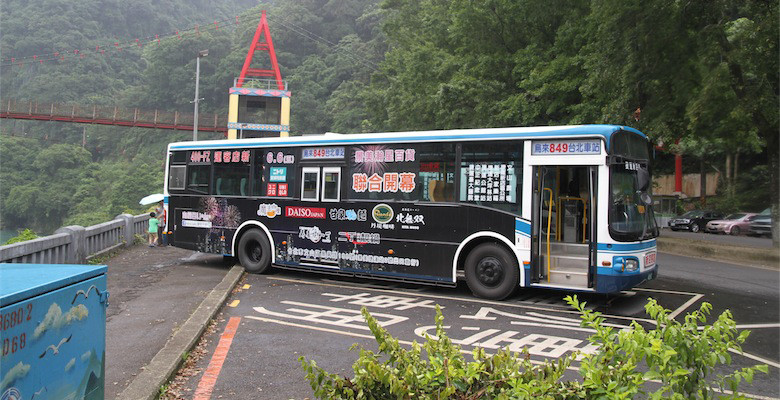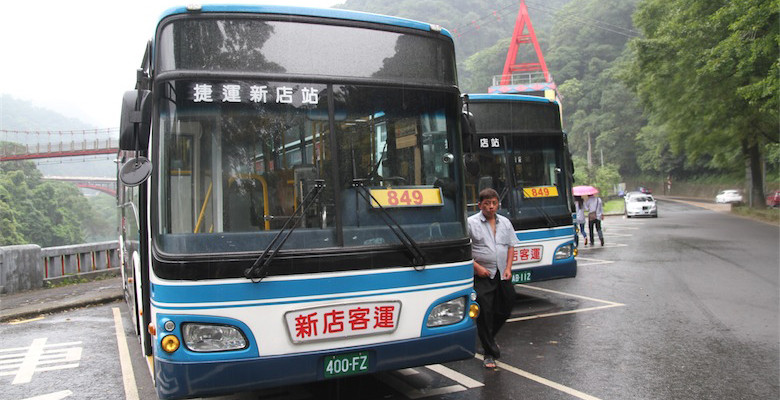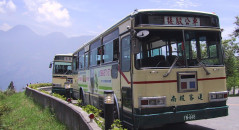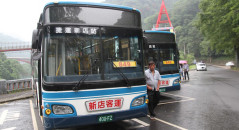Buses. It’s safe to say many people have a love-hate relationship with them. Sure, they might get you to your destination cheaply, but if the bus you are riding on is heaving with passengers and you don’t have a seat, it may not be the most pleasant of journeys. Or, if you finish up a late night out and don’t have a spare one or two hundred NT for a cab, the sight of a night bus to ferry you home is a most welcome sight. However, if you arrive at the stop a second too late, just as the last bus—your bus!—is pulling away, you won’t be counting your lucky stars as you start walking. In Taiwan, this used to be called “taking the #11 bus,” in fact.
Riding buses has changed a lot in Taipei over the years. When I first arrived, I recall having to pull a sometimes grimy rope on the old Hsin-Hsin buses (欣欣客運) to signal the driver to stop. These were replaced by a strip that sometimes worked if you pushed hard enough with your thumb, and more recently, by the individual buttons found on most buses today. I also can remember waiting for one of the Hsin Tien (新店客運) buses in Gongguan (公館) and having to read the complex characters on the front—this was long before the English signage common today. While standing at a crowded bus stop with Granny jostling for position to board her bus, trying to make out “Jin Xiu” (錦繡) was no easy feat. In short, it was always an adventure back then. But there were some perks to riding the buses in the old days. Before the “pay on boarding/alighting” English signage, many of us learned to recognize the characters for get on (“shang” 上) and get off (“xia” 下) that indicated when to pay the fare (上/下車收票). I’d venture a guess these were the first characters many people learned to read. And riding the bus allowed for some daily conversation practice with the driver if we wanted to ask about the route he took.
I’m still a big fan of buses today, although I’ll admit some of the adventure, or romance if you will, has been removed with the advent of modern technology. For example, many of us have waited for a bus for 30 minutes, only for three of them to come at once. Today, however, many bus stops have electronic displays that indicate how many minutes away the next bus is, so there’s less guesswork involved. If you happen to be at a stop without one of these displays but you have your smartphone, there are many apps that can tell you when the next bus is coming. My favorite, BusTracker Taipei, comes to us from a developer called Yapin—it’s free, has alarms to indicate when a bus is approaching, and, best of all, there’s even an English version. Now it’s possible to coordinate your arrival at the bus stop with that of the bus—something that would have been impossible just five years ago. What’s more, many bus companies today have taken a cue from the MRT by installing LED displays telling you which stop is coming up in Chinese and English. If that weren’t enough, there are also recorded stop announcements, so if you’re reading your book or playing around with your phone, you’ll hear your stop announced before you miss it. In the old days, we had to count stops—always a dicey proposition, especially if one went by without passengers getting on and off—and occasionally had to backtrack and “take the #11” if we missed ours.
Like free WiFi, a decent cup of coffee, and a good pizza, these new advancements for Taipei’s public buses will be welcomed by foreign visitors and residents of Taipei alike. True, some of us may yearn for the days when taking the right bus elicited a genuine sense of accomplishment or achievement, given the perceived difficulty of the task. But if improved signage and convenient smartphone apps mean increased ridership, this should result in fewer cars and scooters on the roads, less traffic, and, best of all, less pollution. So, why not hop on the 1, the 285, the 611 or the 649? Who knows? You might just see me there. And you’re sure to find there’s a lot more to love these days about Taipei buses.










